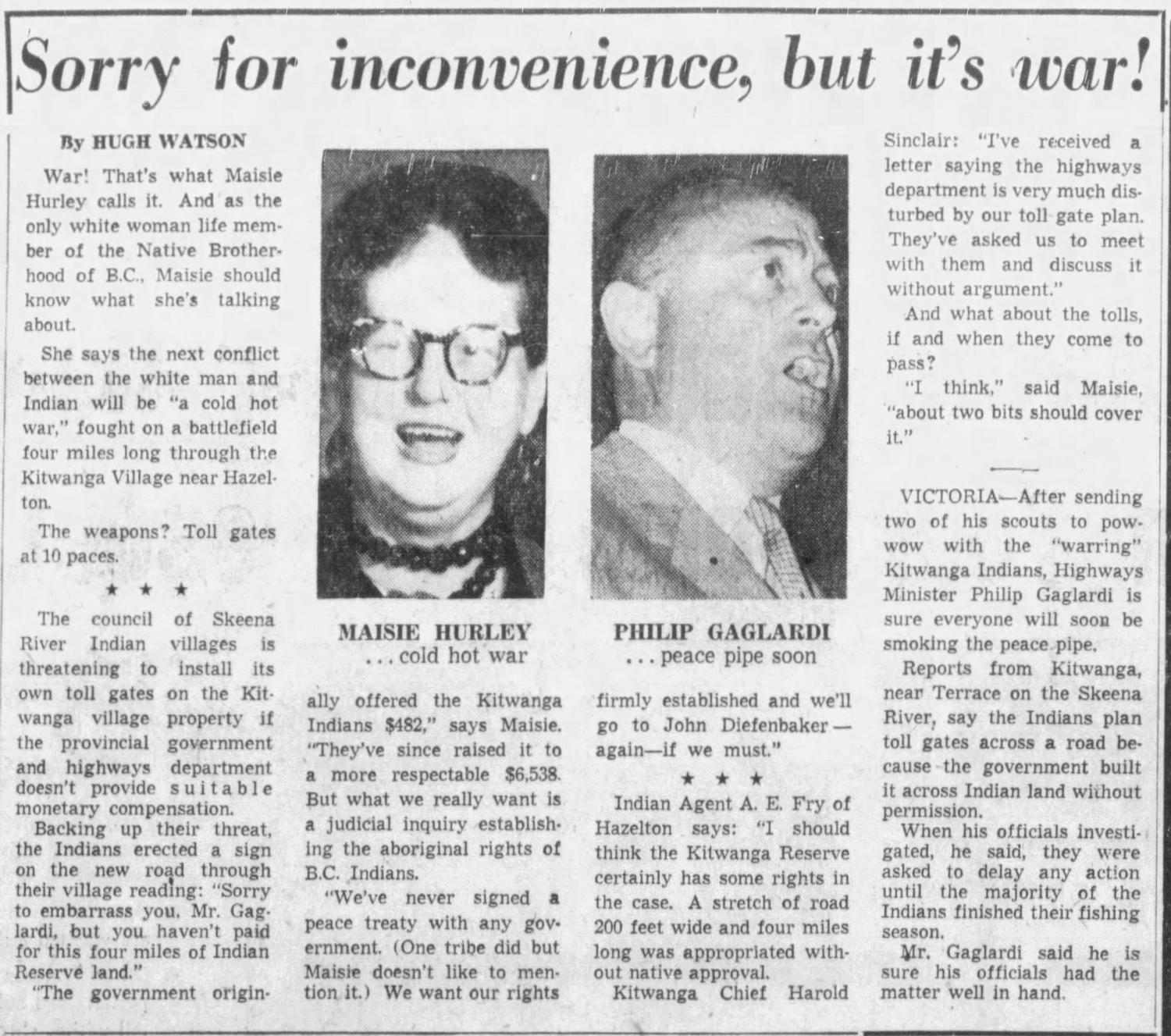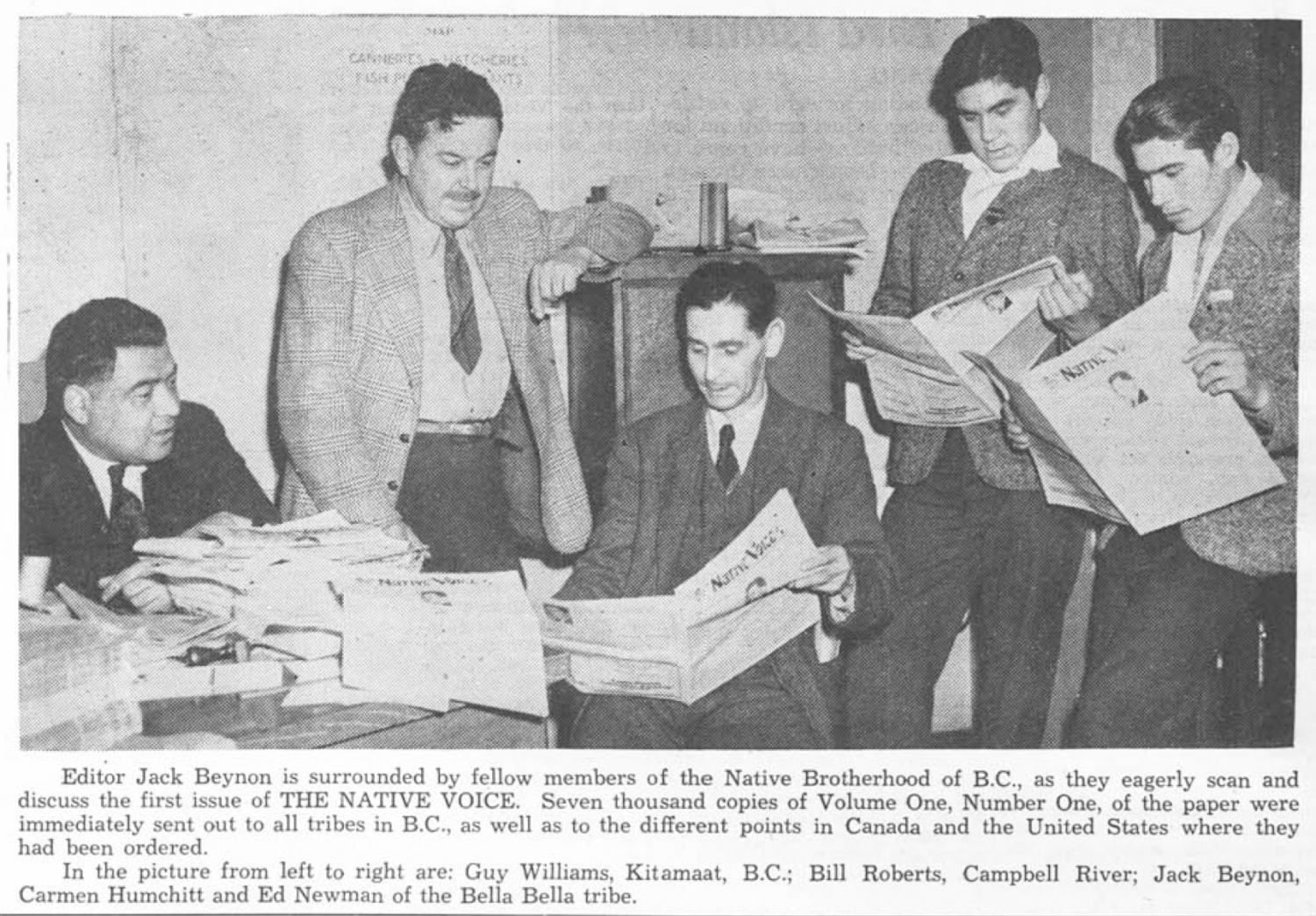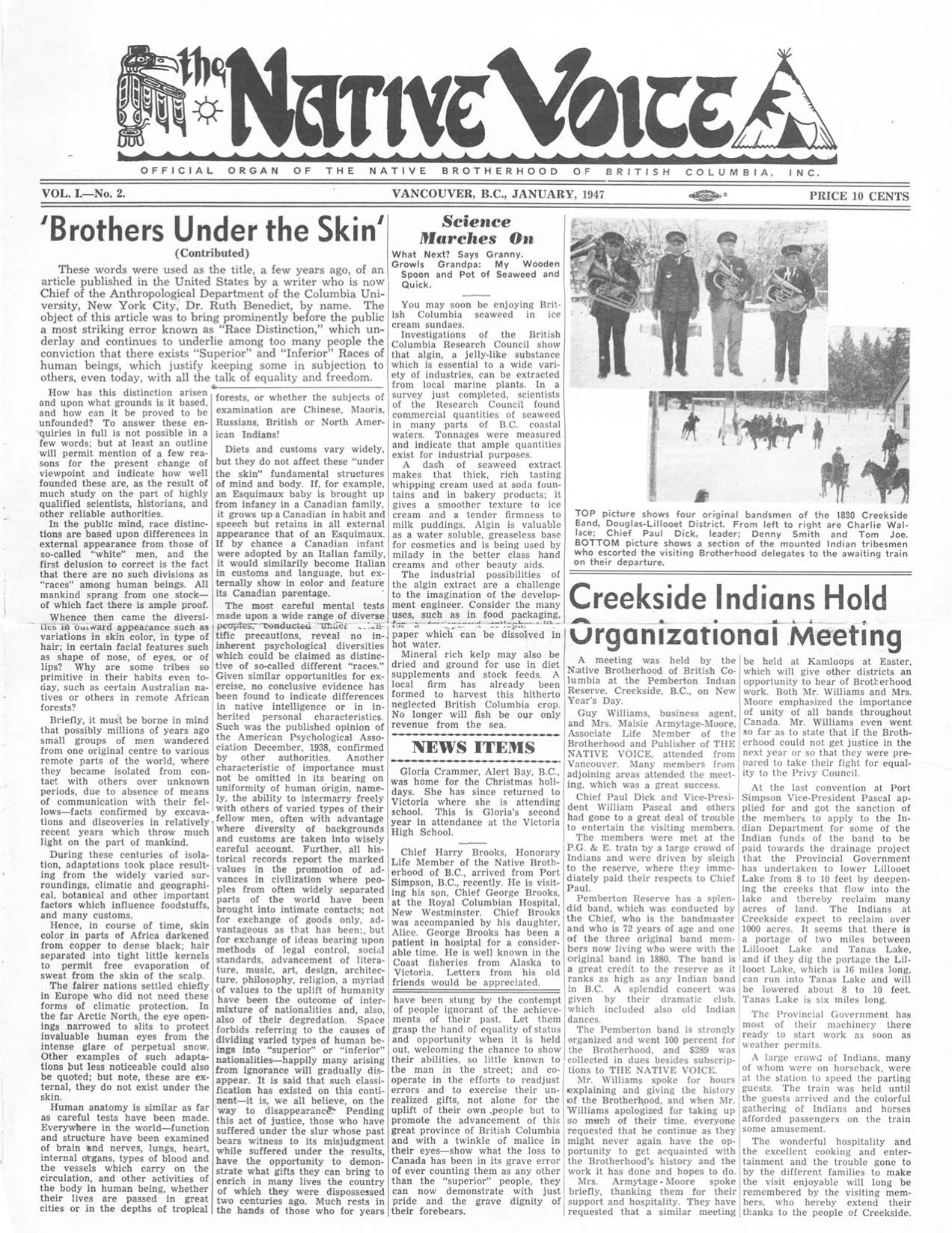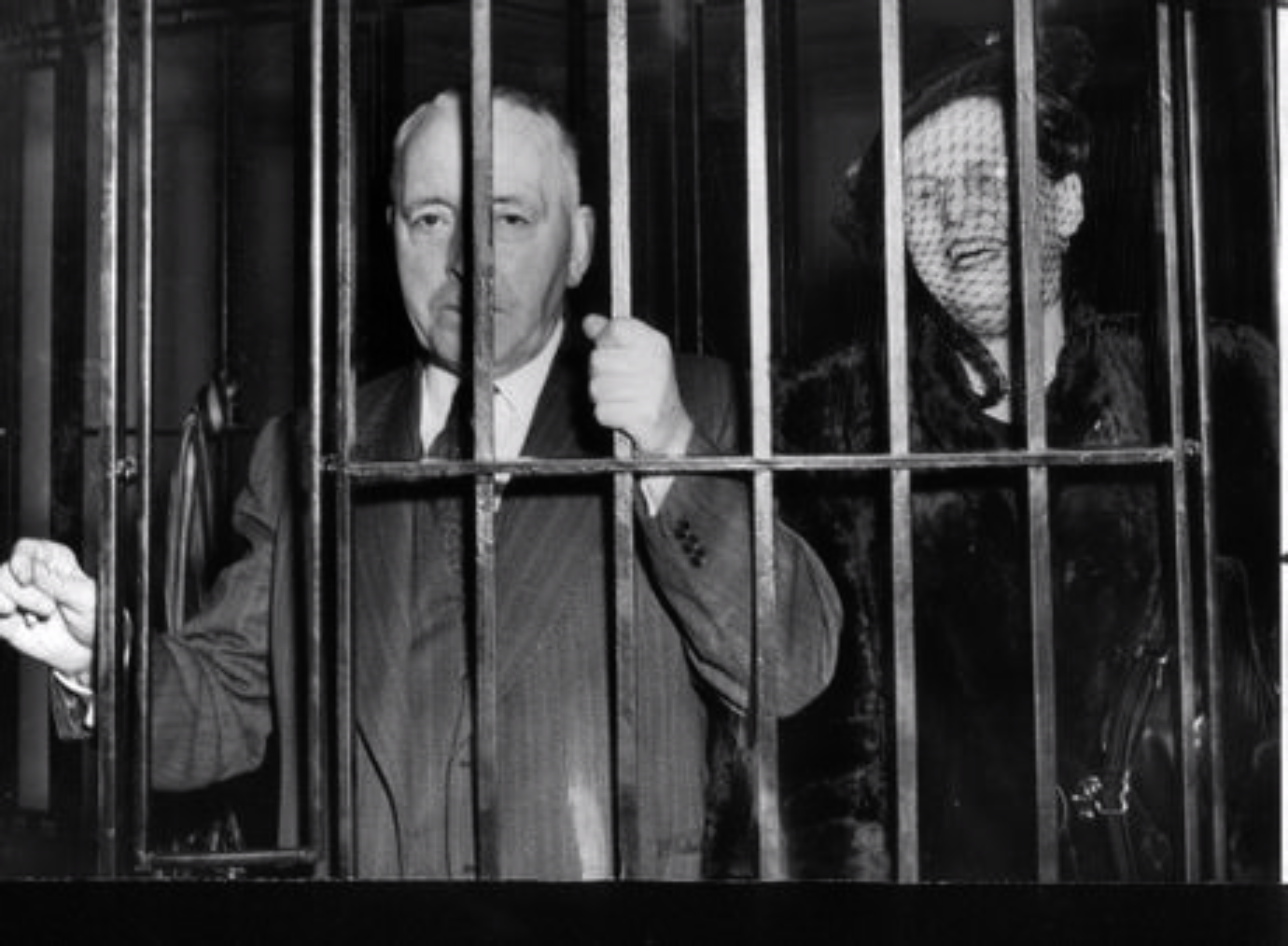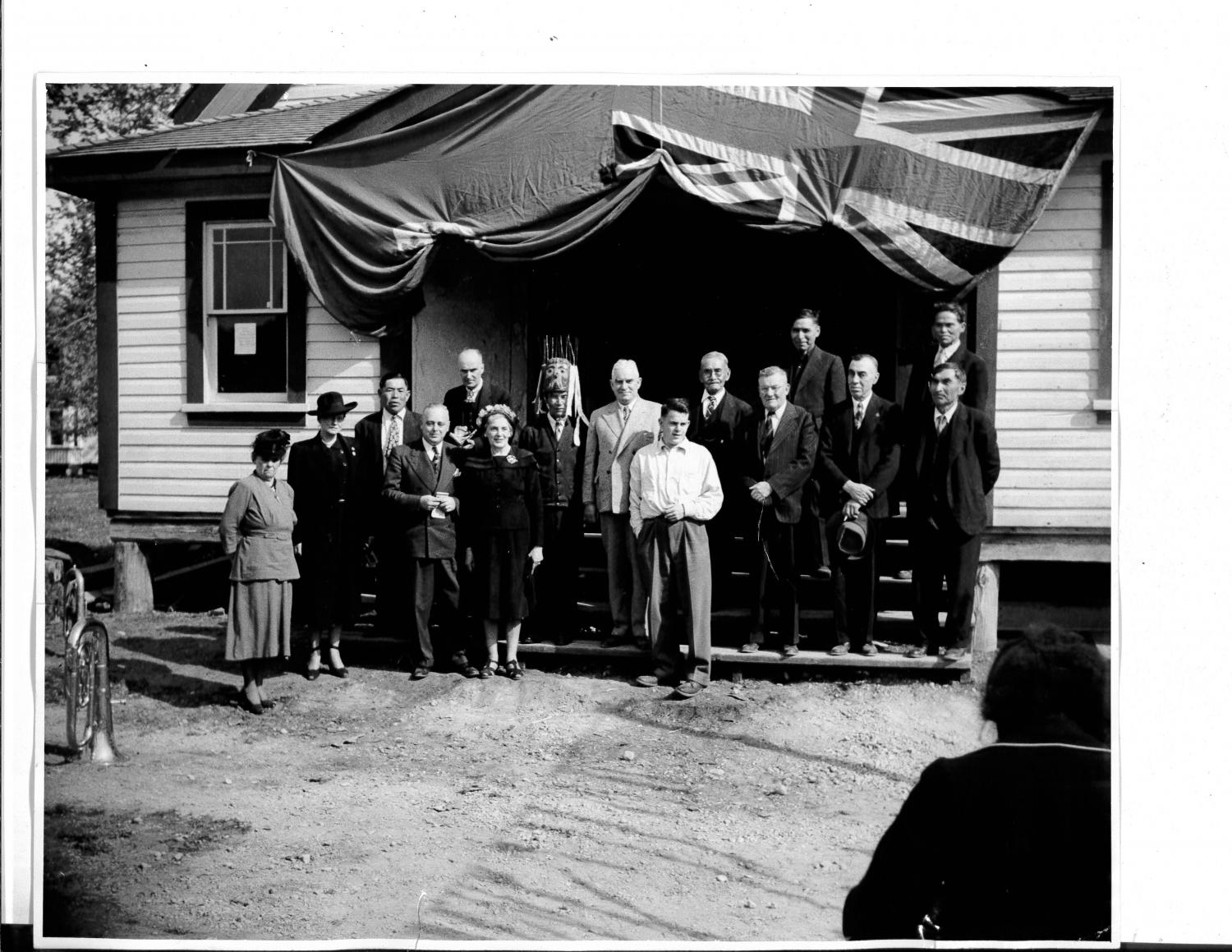Native Voice Published
Maisie Hurley starts Canada's first newspaper focusing on Indigenous issues
Date: 1946
In 1944, Alfred Adams was dying of cancer. But more than a decade after co-founding the Native Brotherhood of British Columbia, he still had plans — namely, to launch a newspaper centred around Indigenous issues. Adams turned to an unconventional source for help: a white woman and descendant of Scottish royalty named Maisie Hurley.
But Hurley was hardly a woman of convention, herself. Born Amy Campbell-Johnston in 1887 — but forever called Maisie — her family had bounced around the globe, from Wales to India, until they landed in B.C.’s Interior, where her father worked as a mining engineer. Although aristocratic by birth, Maisie was always a firebrand. She worked as a union organizer for the Industrial Workers of the World, even while raising five children from her first marriage.
In 1918, Maisie moved to Vancouver. Six years later, she met Tom Hurley, the man she would later marry. Tom was a leading criminal lawyer in the city, with a progressive reputation and a habit of representing First Nations clients free of charge. As his secretary-turned-partner, Maisie began representing his clients in court, too. She took on cases pushing for Indigenous suffrage and modifying the Indian Act. Maisie also drew attention to how the provincial government was stripping Indigenous communities of valuable land through the McKenna-McBride Commission. In total, she defended 80 cases in front of a magistrate — with no law degree. She didn’t lose a single one.
So, when Adams approached her in 1944, Maisie had already proven herself a spirited and knowledgeable non-Indigenous ally to First Nations in B.C. At the time, that made her a rarity. With $150 of her own money — about a little more than $2,000 today — Maisie officially launched The Native Voice in December 1946. It was Canada’s first Indigenous newspaper. “I have worked with the Indians and then the Native Brotherhood for many years,” she later wrote to a colleague. “Seeing they needed a paper, I founded this paper on a shoestring… and it is growing in spite of many setbacks — run purely to help the Indian cause.”
Over the ensuing decades, The Native Voice solicited writing from both Indigenous and non-Indigenous writers alike. It covered everything from the Canadian government’s dispossession of traditional Indigenous territory to the discrimination and poverty faced by First Nations. The paper helped form connections between Indigenous activists and educated Canada’s white populace, calling for unity with First Nations.
For her work, Maisie was adopted by a number of different tribes and maintained close friendships with several Indigenous leaders. She even was admitted to the Native Brotherhood as an honorary member.
Maisie passed away in 1964, following decades fighting for Indigenous rights and uniting disparate First Nations at a time when governments wanted to keep them apart.
Sources:
1. Clare, Kerry. The Native Voice: Canada's First Aboriginal Newspaper. 49th Shelf, 12 June 2017, 49thshelf.com/Blog/2017/06/12/The-Native-Voice-Canada-s-First-Aboriginal-Newspaper.
2. Jamieson, Eric. The Native Voice: the Story of How Maisie Hurley and Canada's First Aboriginal Newspaper Changed a Nation. Caitlin Press, 2016.
3. The Native Voice: Maisie Hurley's "Political Diary". The Source, June 2017, thelasource.com/en/2017/06/12/the-native-voice-maisie-hurleys-political-diary/.
